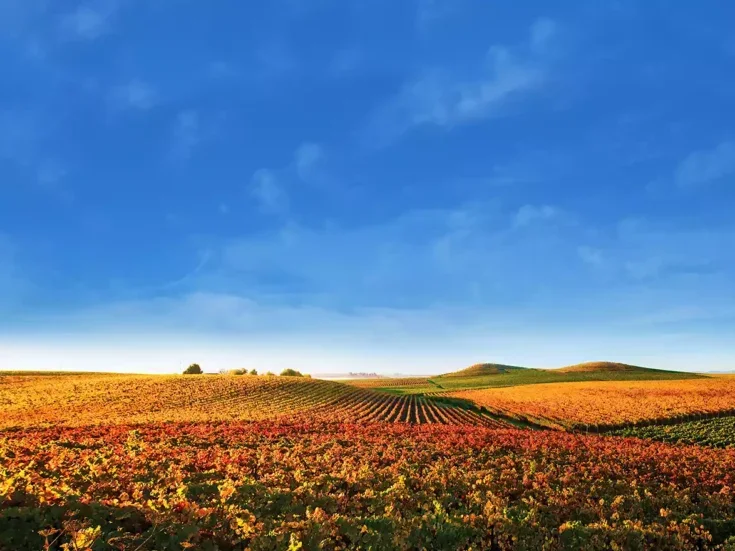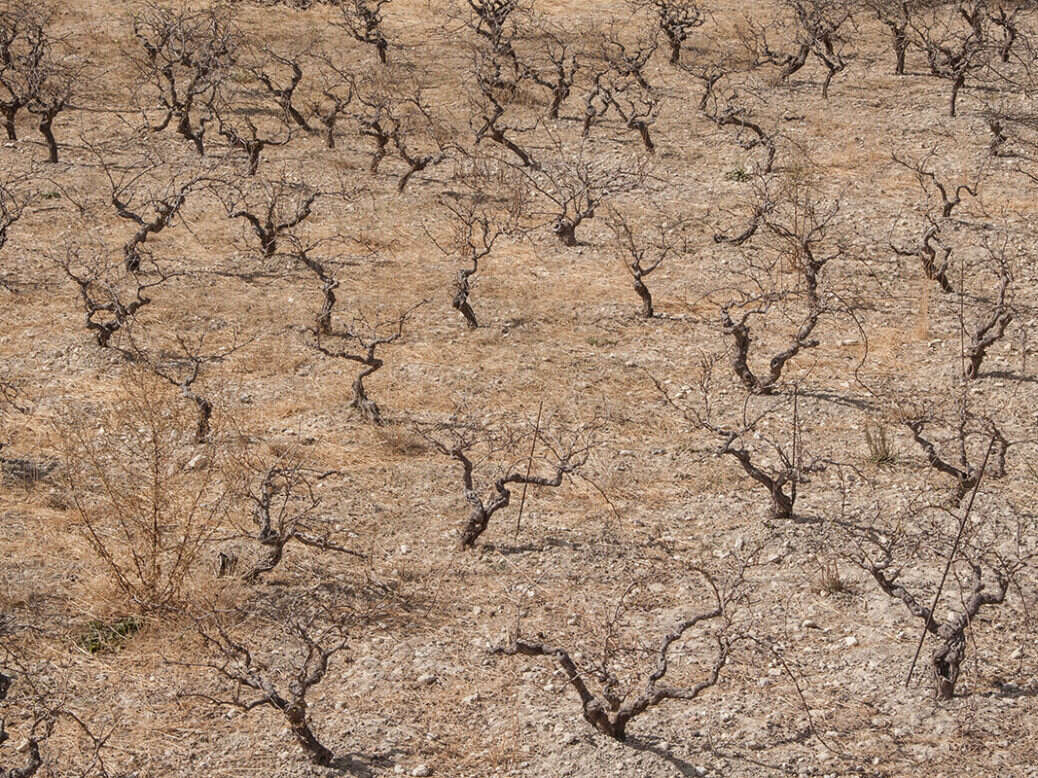
The central question when it comes to climate change and wine is whether we are looking at a “predictable march toward a warmer world”or “a radical rise in uncertainty arising from more extreme weather—hot and cold, wet and dry,” says Professor Emeritus of Geography, University of Edinburgh, Michael Summerfield.
Uncertainty has always been the leitmotif of the viticulturist’s life. This is expressed in an annual cycle of decisions related in one way or another to the weather: when to thin shoots; when, or if, to spray; when to harvest. These vintage-to-vintage vicissitudes of weather have been familiar terrain for centuries, but over recent decades a new challenge has emerged, initially dismissed or ignored but now acknowledged almost universally.
This fresh challenge is the longer view required by the uncertainties of rapid global warming, which presents new considerations: whether to move vineyard location, whether to plant different grape varieties, whether to invest in irrigation. The pace of change has been accelerating and is far exceeding the previous, relatively comfortable natural fluctuations in climate encountered in previous centuries—in Europe, the warmer, early medieval period followed by a cooler episode known, overdramatically, as the Little Ice Age, which lasted into the 19th century. Only a few generations ago, the advance of glaciers in the Alps was a threat to rural communities, and in the 19th century, glacial ice was being carved off and dispatched to Parisian hotels to chill their Champagne. Now the concern is how many Alpine glaciers will be left by the end of century.
Today, wine producers have two sets of challenges: the day-to-day decisions in response to the weather, and the longer-term climatic uncertainties of a warming world. Grape yields and quality, and the quantity and characteristics of the resulting wine, are significantly influenced by the sequence of weather in a particular growing cycle. But what grape varieties are viable or are capable of producing high-quality wine in a particular locality is determined by climate in the sense of the average state and variability of the weather in a place over a period of a few decades. Changes in the average state and variability of this weather results in a shift in the climate of a region—as recorded by climatic data such as temperature and precipitation. But it is changes in the climate system—the atmospheric–terrestrial–oceanic interactions creating the weather from day to day—that modify the nature and frequency of the types of weather experienced. Often these two meanings of “climate”—the average characteristics of day-to-day weather over the long term, as distinct from the processes involved in the climate system—are conflated, but it is essential to distinguish between them if we are to understand how “climate change” is likely to affect the world of wine over the coming decades.
Wine and the climate crisis: Where are we now and what happens next?
This distinction is especially relevant when it comes to weather extremes, because one of the predictions arising from a warming world is that the frequency and intensity of extreme weather events—heatwaves, freezes, droughts, and flooding—will increase, and this is a consequence of changes in the Earth’s climate system. Not all regions of the world will be equally affected by these changes, and from the perspective of wine, Europe is the critical continent, as it accounts for more than 70 percent of the world’s total production, including a very high proportion of the world’s premium wine. And Europe has the potential for an erratic climate future, since it sits in the battleground between cold and warm air masses stirred together over the North Atlantic and guided by violent funnels of air high in the atmosphere. Here I want to look at the impacts of a warming climate on viticulture and wine, but especially to focus on the potentially uncertain climate future facing Europe and its wines as a consequence of significant changes in weather patterns affecting the continent.
The shifting climate
Widespread industrialization during the 19th century greatly increased emissions of greenhouse gases, such as carbon dioxide, through the consumption of fossil fuels, and the accumulation of these gases in the atmosphere has affected the Earth’s energy budget. To put it simply, more of the sun’s heat is being trapped in the atmosphere and warming the Earth’s surface. This, in turn, has had other consequences, such as the acceleration of the hydrological cycle, with water being evaporated more rapidly, especially from warmer oceans, producing more rainfall globally. In addition, other human activities such as deforestation, urbanization, and the extension of agriculture have affected both regional and global climate by changing properties of the Earth’s surface that interact with the atmosphere, with the reduction in global biomass making a further contribution to atmospheric carbon dioxide.
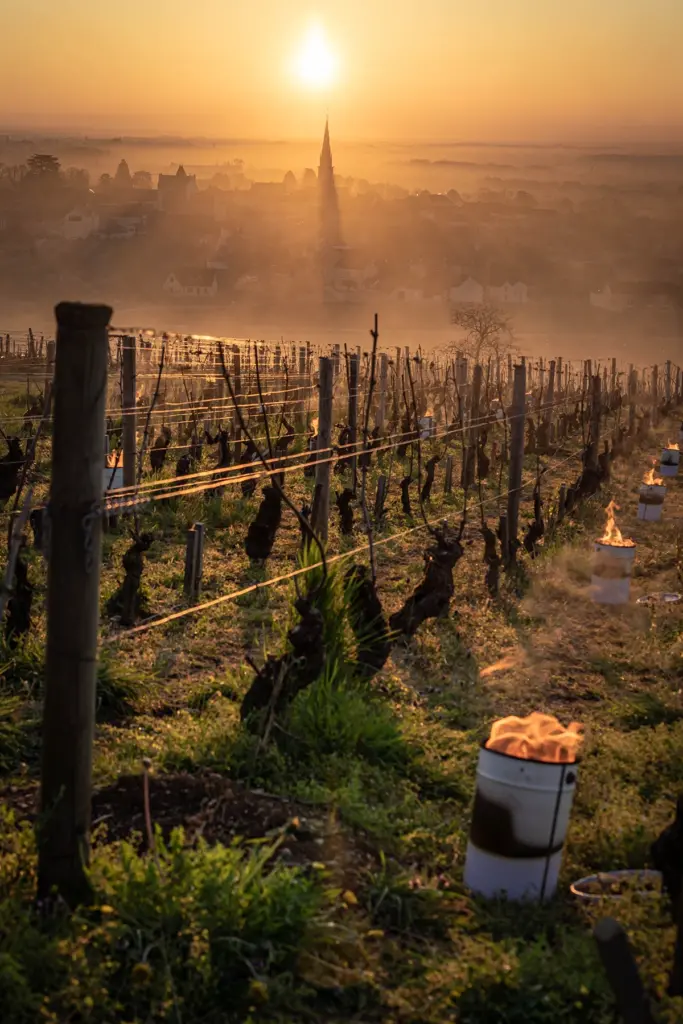
As I write, the latest climate information has just been released by the European Union’s Copernicus environmental monitoring organization, and it is no surprise that 2022 was another hot year.1 Globally, it was the fifth-warmest since reliable instrumental records began in the 19th century—and the past eight years have been the eight warmest. The mean annual temperature was about 2.2°F (1.2°C) higher than the average for the period 1850–1900. The concentration of atmospheric carbon dioxide continued its remorseless annual increase, rising 2.1 parts per million (ppm) over the year and reaching 416.7ppm. For context, in the late 1970s, when I first started teaching students about climate change, it was below 335ppm—an almost 25 percent increase in little more than 40 years. In fact, we would have expected 2022 to be a little cooler than some recent years, because the world was in a La Niña state for much of the time. La Niña refers to the cooler temperatures across the surface of the eastern and central tropical Pacific Ocean and their associated global climatic effects, and this alternates with the warmer El Niño state. Climatologists often refer to this switching as the El Niño–Southern Oscillation (ENSO), which effectively conveys the idea of this alternation of global weather patterns over periods of a few years. As we move into another El Niño phase in the next few years, this natural heating effect will be added to the human-driven warming trend, so more temperature records are all but inevitable.
Turning to Europe, 2022 was an even more extreme year. For the continent as a whole, it was the second-warmest recorded, exceeded only by 2020, but it experienced its hottest-ever summer, with intense heatwaves in the west and the north. Major wine-producing countries—including France, Spain, Portugal, and Italy—actually experienced their hottest-ever year, and the combination of persistent low rainfall with these extreme temperatures created widespread droughts. Over the past 30 years, temperatures in Europe have increased at twice the global average, a reflection of the much greater overall rate of temperature increase at higher latitudes. In 2022, both polar regions experienced record-high temperatures, with the center of Greenland being 14°F (8°C) above average in September. The warming of the polar regions at a greater rate than the global average is especially evident in the northern hemisphere, where the phenomenon is known as Arctic amplification. A significant factor here is the reduction in the area of Arctic Sea ice and snow cover on land, since both snow and ice are highly efficient at reflecting solar radiation back into space.
So, what does the future hold, and how uncertain is our climate future? Will we face a progressively warming world, or are there surprises in store as this very warming dramatically perturbs the global climate system? Of particular concern to climate modelers trying to predict the future is the existence of “tipping points” or thresholds in the climate system. These are interactions that produce a gradual change up to a certain point, then a rapid or, in some cases, self-sustaining change that shifts the climate into a different state. Such tipping points are linked to phenomena such as the reduction in Arctic summer ice, the melting of the Greenland ice sheet, and changes in ocean currents. More global warming means more tipping points will be crossed. Some could come into play even with the 2.7°F (1.5°C) post-industrial mean global warming adopted in 2015 as an upper limit in the Paris Agreement. Many believe that this will be exceeded over coming decades, and this would add to the likelihood of climate tipping points being triggered.
Climate change: Impacts in the vineyard and the glass
All of the world’s high-quality wine-producing regions have become warmer since the middle of the 20th century, and until recently this has generally been beneficial rather than problematic. Overall vintage ratings have improved and variations in quality between vintages have become less marked. Improved viticultural and winemaking techniques have played a role here, but a warming climate has clearly also been important. The question now is, have these high-quality wine regions reached, or even passed, their optimum in terms of temperatures during the growing season for the grape varieties being cultivated? And given the crucial association in the wine world of place with particular grape varieties and wine styles, will further warming mean much more challenging growing conditions that threaten the very notion of “typicity”—an existential challenge given the importance of the place-based wine-classification systems that dominate the fine-wine market? Indeed, will the whole geography of wine production change over the coming decades? Warming trends, especially the greater increases in temperature experienced at higher latitudes, have already led to a poleward shift of wine-grape growing and a migration to higher-altitude vineyard sites, along with the adoption of warmer-climate grape varieties in existing locations.
In the vineyard, the primary impact of a warming climate is to accelerate the phenological stages of vine growth and to shorten the growing season.2 Budbreak is occurring earlier in the year, and flowering and véraison are following more rapidly. It has been concluded that on the basis of data collated from a wide range of wine regions around the world for the past 30 to 50 years, particular phenological events are occurring five to ten days earlier for every 1.8°F (1°C) increase in mean annual temperature. With this evidence, it is not difficult to envisage the consequences of further warming over coming decades, including earlier harvesting, which is now taking place during a warmer time of year, and earlier budbreak rendering vines more vulnerable to the late-spring frosts. As temperatures move above the optimum for a particular grape variety, there are impacts on ripening in terms of acidity, sugar content, and phenolic maturity, and this can produce unbalanced wines with high alcohol, low acidity, and other characteristics that compromise the desired typicity. In many wine regions, increased temperatures have been accompanied by drought, which can limit vine growth and sugar development and result in lower yields through reduced berry size. Although the grapevine is a drought-resistant plant, severe drought impairs photosynthesis and may increase tannin and anthocyanin content, and also malic-acid concentration. Of course, vineyard management and winemaking techniques can mitigate or even eliminate some of these adverse environmental effects, but this approach becomes progressively more difficult as climate change becomes more pronounced.
The climate crisis: Floods, lakes, and subsidies
In the globally significant wine-producing regions of Europe, the trends are already clear and the long-term climate forecasts concerning.3 The prediction from climate models is for mean annual global temperature to increase by between 4.5° and 10°F (2.5–5.5°C) by the end of the present century, because there is pessimism about achieving the Paris Agreement limit of +2.7°F (+1.5°C). Based on the trends of recent decades, temperature increases in Europe will be higher than the global average. The consequences for viticulture differ between southern and northern Europe, with the south being subject to very high summer temperatures that will lead to severe water stress in parts of Italy, Spain, and Portugal. This could be ameliorated by irrigation, but that depends on regulatory adjustments and the availability of affordable water supplies. In northern Europe, the warming trend so far has been largely beneficial, but further warming in the future poses significant challenges for some classic wine regions. For example, in Alsace, budburst is predicted to advance by between 8 and 11 days over coming decades, with véraison being up to between 16 and 24 days earlier, while a 5.4–9°F (3–5°C) warming is projected to advance the ripening of Pinot Noir in Burgundy by between three and five weeks. In the long term, it is projected that viticulture in southern Europe will be adversely affected due to an increase in cumulative thermal stress and lack of water in the growing season, which will be exacerbated by the increased water demands under a warmer climate. In western and central Europe, the potential limit for high-quality wine-grape production will migrate significantly northward.
Uncertainty or predictable change?
These various effects of a warming climate on viticulture and wine production are not necessarily the most challenging impacts of climate change. Of more concern is extreme weather, as it seems that searing heatwaves, along with severe freezes, are becoming part of our present-day climate mix. This raises an important question: Is the change in global climate over the coming decades going to be a predictable march toward a warmer world, or will the uncertainty arising from more extreme weather—hot and cold, wet and dry—add radically to the uncertainties that our viticulturists and winemakers have to face? For Europe, and especially many of the premium wine-producing regions of France and Germany, the answer may lie in the behavior of high-velocity funnels of air in the upper atmosphere known as the jet stream, and the way this may change with global warming. Indeed, this idea, proposed by a number of climatologists and atmospheric physicists, has now permeated through to the mass media, as I have begun to notice through news reports over the past year.4 So, what is the jet stream, how does it affect our weather, and how might its influence change in the future as climate change gathers pace? To understand these questions, we need to delve into a little meteorology.
Although speculations about high-altitude wind systems date back to the 18th century, the phenomenon was first systematically studied in the 1920s by the Japanese meteorologist Wasaburo Ooshi. He released large numbers of meteorological balloons close to Mount Fuji and noticed that on reaching high elevations in the atmosphere—above about 33,000ft (10,000m)—they started to move rapidly eastward, out across the Pacific Ocean carried by a high-velocity stream of air. Perhaps because he published in Esperanto, these observations did not become more widely known, though the information was used to launch hydrogen balloons carrying explosives across to the USA during World War II, to the bemusement of the American military. The persistence and significance of these ribbons of very strong winds became fully appreciated during World War II, because aircraft being flown at high altitude from the United States to Europe frequently experienced tailwinds in excess of 95mph (150km/h). From the 1930s to the 1950s, the Swedish-born American meteorologist Carl-Gustav Rossby coordinated the collection of data from weather balloons that established the global nature of what became known as jet streams. Eventually two systems were identified in each hemisphere, the subtropical jet stream, and the sub-polar jet stream in the mid-latitudes, though it became appreciated that their latitude can change significantly over time and with longitude, and that they can frequently combine into a single zone of strong westerly winds.
If the surface of the Earth were uniform, then it would be expected that jet streams would be more or less straight, running along a line of latitude. This is actually the case to some extent over the large expanse of the North Pacific, where the ocean provides a fairly uniform surface. But overall, the Earth is not uniform, because there are continents, mountain ranges, and variations in temperature across the otherwise relatively uniform surface of the ocean. These regional variations in topography, and contrasts between ocean and continent, create north–south undulations in atmospheric circulation known as Rossby waves (following Rossby’s research in understanding these flow patterns). Anyone who lives in the mid-latitudes is familiar with these atmospheric waves because we see them as the succession of areas of low pressure (cyclones) and high pressure (anticyclones) that typically move from west to east. This produces a meandering pattern, with the waves running around the equatorward side of cyclones and the poleward flank of anticyclones. Rossby waves are considered to play a key role in the formation of jet streams, and they are evident in their meandering form as they twist around areas of high and low pressure. Another important factor is the significant temperature gradient across the mid-latitudes—the cold, dense air of Arctic regions compared with the much warmer and buoyant air of the subtropics—which promotes instabilities in the atmosphere creating eddies. These tend to grow and merge, eventually giving rise to the large-scale undulating pattern of the Rossby waves.
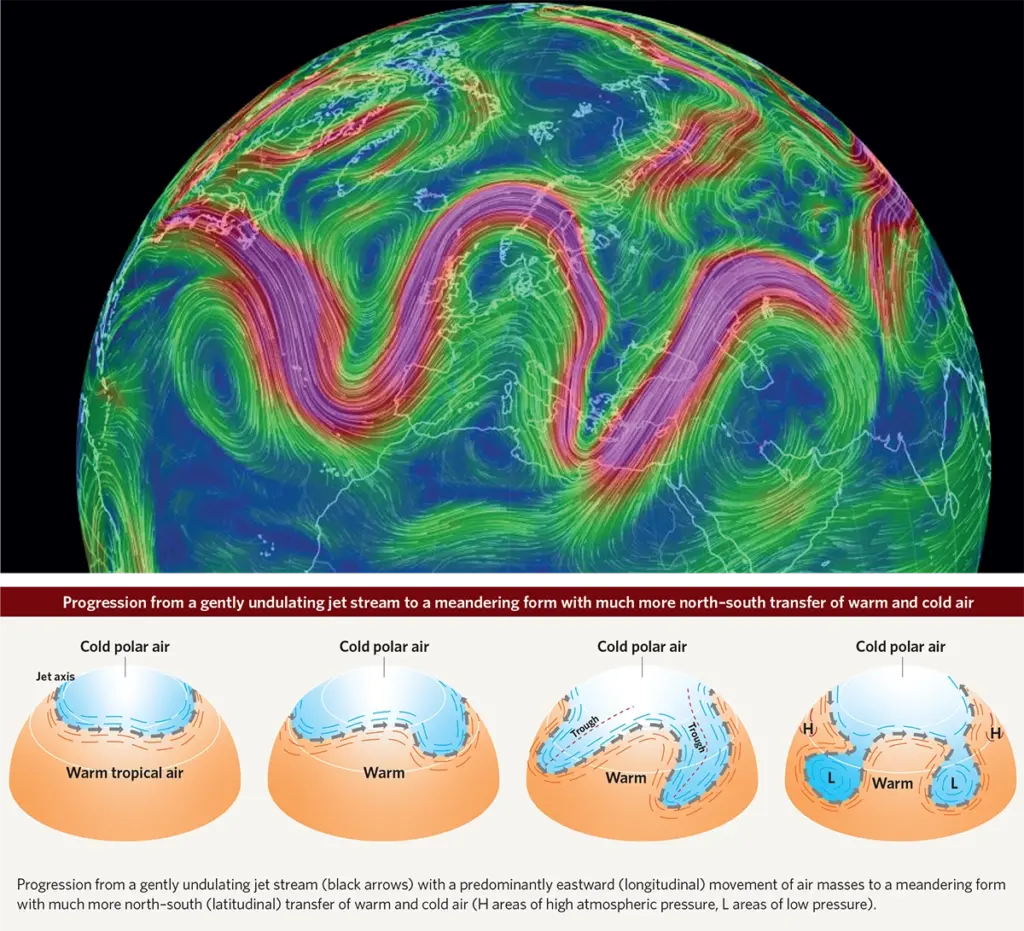
The predominant westerly winds of the mid-latitudes means that Rossby waves and the jet-stream meanders associated with them tend to migrate slowly from west to east, but they can stall and become more or less stationary for days or even weeks at a time. When the meandering pattern of the jet stream stagnates, it can lead to cutoffs, just as a meandering river with an ox-bow form can be breached across the neck of the bow, producing a double-jet-stream state.5 What is called a “blocking” situation develops when the undulations in the jet-stream waves become very large and form an anticyclonic eddy in the air flow. This blocks the eastward propagation of Rossby waves and can persist for one to two weeks. Such blocking anticyclones have profound consequences for the weather patterns of the mid-latitudes, since they are associated with persistent and extreme weather events, in which there is much more transfer of air masses from south to north and vice versa. The result is heatwaves or pulses of very cold weather, as well as floods or droughts affecting areas such as northwest Europe. This contrasts with the alternative, much less undulating jet-stream pattern, producing changeable weather with more moderate temperatures.
Under our present climate, there is great variation in the behavior of the jet stream in the mid-latitudes with periods of changeable weather with only a gently meandering jet stream alternating with interludes of persistent weather types, when the jet stream meanders wildly and creates blocking situations. Despite its unpredictability in the short term, however, it is possible to talk of the average frequency of these weather types over a period of years. As it is the steep temperature gradient between the poles and the mid-latitudes that promotes the atmospheric disturbances that give rise to Rossby waves and the jet stream, a key question is what will be the consequences for the climate of mid-latitude regions, such as central and northern Europe, of a lessening of this gradient. One view, which has attracted significant support among climate scientists, is that a reduction in this temperature gradient as a result of the polar regions warming more rapidly than the mid-latitudes will result, on average, in a weaker jet stream that will be more likely to assume an extreme meandering form.4 If this is the case, it will have serious implications for the weather that will be encountered by viticulturists in areas such as northwestern Europe. For Germany and much of France, it suggests a deeply uncertain future in the vineyard rather than a gradual progression to a warmer climate, with the kinds of extreme events experienced over recent years—scorching heatwaves and late-spring frosts—becoming more common.
As with any statements about future climate, there is always a health warning, since all such predictions are limited by the degree to which the operation of the atmosphere—with its extraordinarily complex interactions between air, land, and water—is understood, and by the capability of modeling the future at a fine enough scale to provide robust projections for particular regions. A major problem is the natural variability of the climatic system, and the behavior of the jet stream is a rather extreme example of this. The more natural variability there is, the more difficult it is to detect a change in the underlying operation of that component of the climatic system from observational data. Hence there are some climatologists who are not convinced that there is any clear sign yet of a change in the average behavior of the jet stream of the kind that has been predicted.6 Moreover, there is still much to be understood about the factors that drive the behavior of the jet stream, and in particular just how important polar warming might be in this. For example, while the atmosphere at low levels above the Arctic is warming rapidly as the Earth overall heats up, the upper atmosphere in more tropical latitudes is also expected to warm significantly, thus maintaining the poleward temperature gradient and stimulating a strong, less meandering jet stream. This effect could possibly counter the tendency for a reduced temperature gradient near the surface to promote a much wavier jet stream. Nonetheless, there is sufficient information from our current understanding of the climate system to seriously consider the implications of an uncertain climatic future with a substantial increase in extreme weather events.
The challenge of more extreme weather?
For Europe, there are two main implications of a change in the behavior of the jet stream to a weaker, more meandering form. One is more frequent prolonged periods of excessive summer heat as pools of hot air are drawn northward across Europe from North Africa, and the other is bursts of very cold air from the Arctic moving southward over Europe in late winter and early spring. Episodes of excessive heat have consequences in the vineyard that go well beyond the effects of generally warmer temperatures. Temperatures above 95–104°F (35–40°C) can severely affect the grapevine’s photosynthetic system and can cause skin damage to berries through sunburn. Biochemical and physiological processes are affected, including berry sugar-acid and flavonoid levels, as well as grape-skin color and aroma, especially for early-ripening varieties.
But even more than heatwaves in Europe in recent summers, it has been the occurrence of highly damaging late frosts that have attracted attention.7 They occurred in France in 2017, 2020, and 2021, but even in 2020 the Rhône Valley was affected. The April 2021 frost was particularly extensive, affecting at least 80 percent of French vineyards, and was especially damaging because it followed record-high temperatures in the previous month. Late frosts coinciding with budbreak are a problem because the new growing shoots have a high water content and are thus especially vulnerable to freezing. The actual impact depends on the kind of freezing event and the stage of bud growth—but during budburst, a temperature of 28°F (–2.2°C) is lethal for about 50 percent of buds.
Excessive summer heat and drought, but especially damaging late-spring frosts, can severely limit yields and thereby the quantities of wine available in the marketplace. This is especially important for certain premium wines from very restricted geographical areas—such as in Burgundy—where quantities are very limited even in good years. After the devastating early April frosts in Burgundy in 2021, yields were down by nearly 50 percent compared with the previous year, with Chardonnay and Aligoté in the Côte de Beaune suffering an 80 percent loss. Despite the relatively abundant vintages of 2017 and 2018, average yields in Burgundy have declined by 30 percent over the past decade.
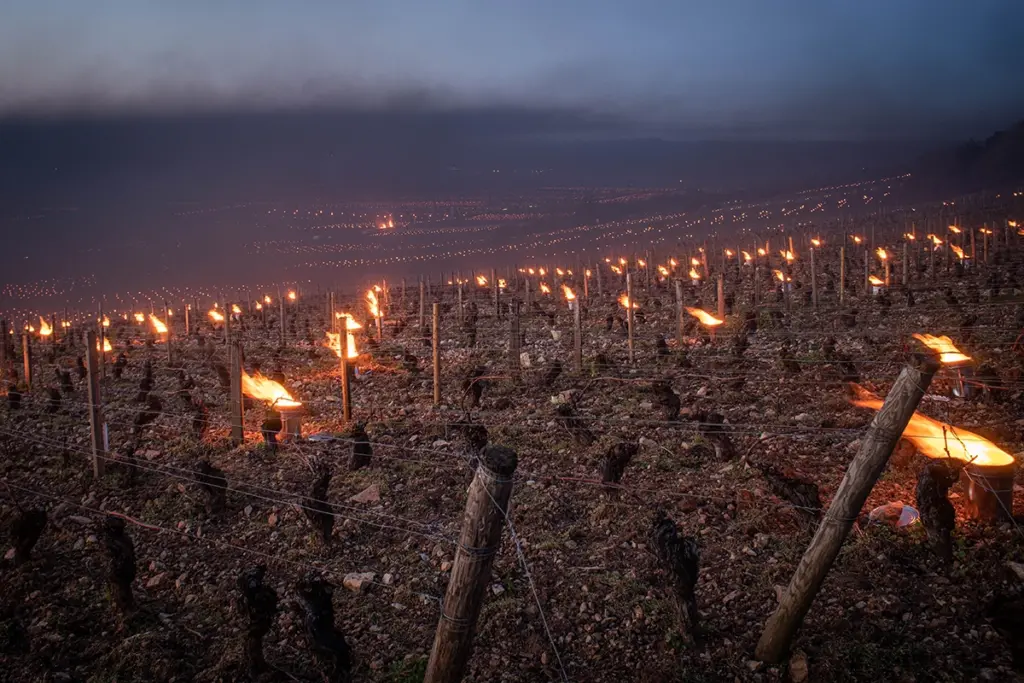
The key question is whether the advance of higher average temperatures to earlier in the year is occurring more or less rapidly than the advance in the date of the last damaging frost. The research on this is equivocal, since it depends on the budburst model used and, to a lesser extent, the climate model applied, but a study of the situation in France has indicated that early-maturing grape varieties in more continental climates (such as Burgundy) are most vulnerable to late frosts, at least for the next few decades. This conclusion depends, however, on the future behavior of the jet stream, which remains a major uncertainty.
Another tipping point?
If European wine producers are concerned about the challenge of torrid heatwaves and severe late frosts over the coming decades, then there is a further switch of climate that has been identified by oceanographers and climatologists that could pose an even greater threat to Europe and its potential to produce wine at all. It is known by the acronym AMOC—the Atlantic Meridional Overturning Circulation.8 A look at a world map charting isotherms—lines of equal mean temperature—shows a major poleward deviation in northwest Europe that keeps its climate mild and creates year-round ice-free ports in northern Norway and even in northwest Russia. This is a result of the especially warm ocean to the west created by the Gulf Stream. This warms, or maintains the warmth of, the westerly airflow across the Atlantic, which dominates the atmospheric circulation in northwest Europe. The poleward movement of warm ocean water at the surface, and the equatorward movement at depth, is driven by density contrasts related to temperature and salinity. This involves a delicate balance such that it has flipped on and off in the past as recorded by ice-core records and other proxy climatic data. The concern today is the rapid melting of the Greenland ice sheet, which is dumping prodigious quantities of lower density freshwater into the northern Atlantic Ocean. This is regarded by climate modelers as a tipping-point system, whereby at some stage, possibly over coming decades, further very small changes in the density contrasts in the waters of the North Atlantic could shut off this conveyer belt of warm ocean water and its associated flow of mild westerly winds. This would plunge much of Europe into a substantially colder climate, and that would be not so much uncertainty as disaster.
Notes
1. European Commission Copernicus Programme Climate Change Service: climate.copernicus.eu/copernicus-2022-was-year-climate-extremes-record-high-temperatures-and-rising-concentrations
2. GV Jones, R Reid, A Vilks, “Climate, Grapes, and Wine: Structure and Suitability in a Variable and Changing Climate,” in PH Dougherty (ed.) The Geography of Wine: Regions, Terroir and Techniques (Springer; Dordrecht, 2012), pp.109–33; GV Jones, “Climate Change, Viticulture, and Wine,” in AG Reynolds (ed.) Managing Wine Quality Vol.1 (Elsevier Woodhead Publishing Series in Food Science, Technology and Nutrition, 2022), pp.727–40.
3. MF Cardel et al, “Future Effects of Climate Change on the Suitability of Wine Grape Production across Europe,” Regional Environmental Change 19 (2019), pp.2299–2310; F Droulia, I Charalampopoulos, “Future Climate Change Impacts on European Viticulture: A Review on Recent Scientific Advances,” Atmosphere 12 (2021), 495; doi.org/10.3390/atmos12040495
4. JA Francis, SJ Vavrus, “Evidence Linking Arctic Amplification to Extreme Weather in Mid-Latitudes,” Geophysical Research Letters 39 (2012), L06801 doi:10.1029/2012GL051000; D Coumou et al, “The Influence of Arctic Amplification on Mid-Latitude Summer Circulation,” Nature Communications (2018) doi:10.1038/s41467-018-05256-8; M Stendel et al, “The Jet Stream and Climate Change,” Chap.15 Climate Change (Third Edition), Observed Impacts on Planet Earth (2021), pp.327–57.
5. E Rousi et al, “Accelerated Western European Heatwave Trends Linked to More-Persistent Double Jets Over Eurasia,” Nature Communications (2022); doi.org/10.1038/s41467-022-31432-y
6. EA Barnes, JA Screen, “The Impact of Arctic Warming on the Midlatitude Jet-Stream: Can It? Has It? Will It?”, WIREs Climate Change 6 (2015), pp.277–86.
7. G Sgubin et al, “The Risk of Tardive Frost Damage in French Vineyards in a Changing Climate,” Agricultural and Forest Meteorology 250–251 (2018), pp.226–42; R Blackport, JA Screen, “Weakened Evidence for Mid-Latitude Impacts of Arctic Warming,” Nature Climate Change 10 (2020), pp.1064-1066.
8. LC Jackson et al, “Global and European Climate Impacts of a Slowdown of the AMOC in a High Resolution GCM,” Climate Dynamics 45 (2015), pp.3299–3316; F Sévellec et al, “Arctic Sea-Ice Decline Weakens the Atlantic Meridional Overturning Circulation,” Nature Climate Change 7 (2017), pp.604-610; N Boers, “Observation-Based Early-Warning Signals for a Collapse of the Atlantic Meridional Overturning Circulation,” Nature Climate Change 11 (2021), pp.680–88.

